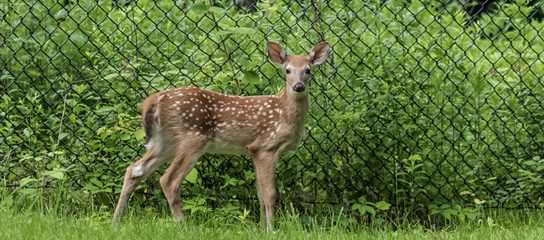Austin Delano
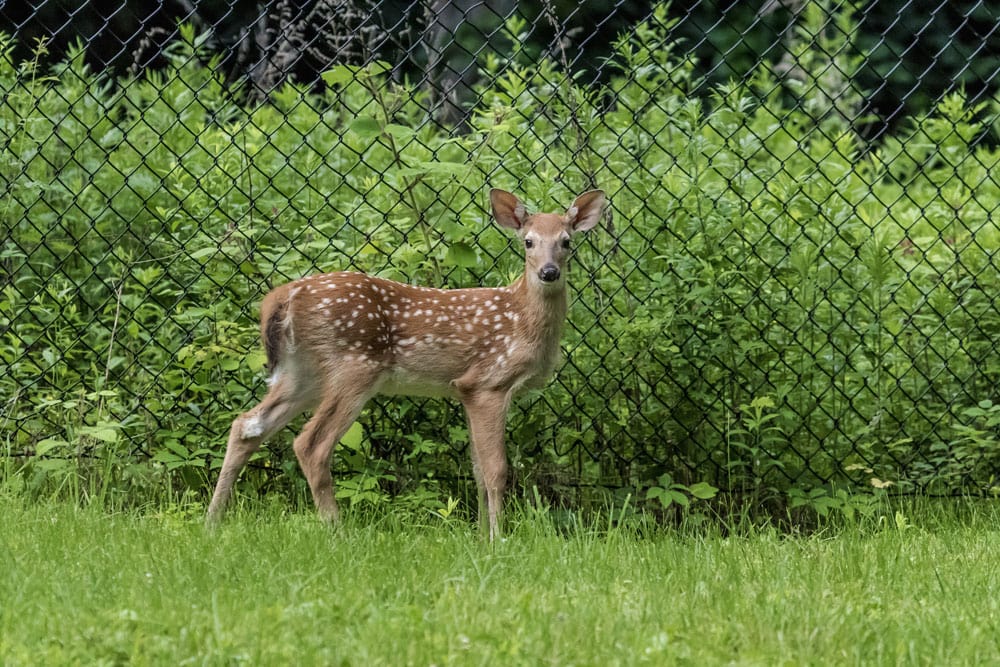
Food plot fencing options: As gamekeepers, we are constantly preaching on the importance of spring and summer nutrition for whitetails. There are huge upsides for your deer herd when they are provided quality, high-protein groceries during the growing months. However, anyone who has tried to grow a small food plot of soybeans, peas, or other highly attractive warm-season annuals, has likely experienced a failure. Although there are a number of reasons for plot failure including lack of rain or poor seedbed prep, the number-one reason for warm-season plot failures is over browsing. Even with low to moderate deer densities, a one-acre soybean plot planted in the middle of hundreds of acres of timber can be destroyed in a few days’ time. In the first few days after germination, popular spring plantings such as iron clay peas, soybeans, or lablab that are bitten off below the terminal bud are done growing and dead. So, now that we have identified the problem, what are some solutions?
For the purposes of this topic, let’s take it for granted that you are doing your part in controlling your deer density through good “trigger finger management,” but are still having problems with over browsed food plots. Physically keeping the deer out of the plots until they become established enough and mature enough to withstand the browse pressure has proved to be an effective tactic. This can be achieved by utilizing a number of different fencing options. After all, what sense does it make to go to the trouble and expense of planting warm-season plots if you know they are going to be over browsed quickly and provide only a few days’ worth of food? Take the time and make a plan to protect your crops so you get the most for your labor and money. For many years, BioLogic has had a product called P2 Plot protector. This kit contains woven poly tape that will protect two, quarter-acre plots or one time around an entire acre. After installing t-posts or rebar around the perimeter of the field, the tape can be put on.
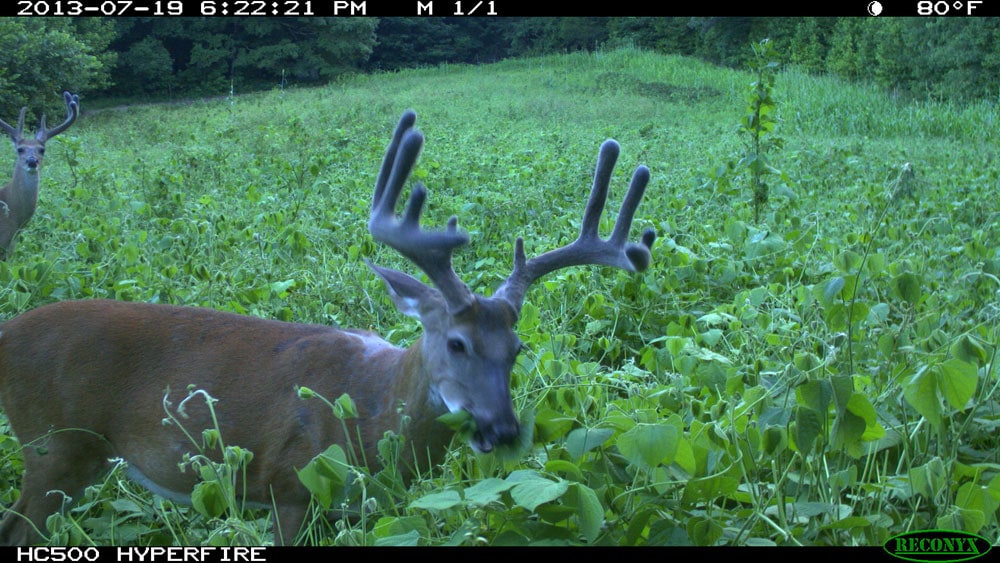
Also included in the kit is a small jug of concentrated solution to spray on the poly tape. This spray has an unpleasant odor to a deer’s sense of smell and keeps them out of the plot for a couple of weeks after each application. After heavy rains, it may be necessary to reapply the spray to the tape to refresh the smell.
We have also found it effective to spray the tape from the outside with a backpack or ATV sprayer and allow the overspray to fall on the crop you are trying to protect. In moderate deer densities, the P2 Kit is often all that is needed to hold off browse pressure until you see the crop is mature enough to handle the stress yet remain prolific.
Another temporary fencing option is a six to eight-foot tall polypropylene fence. These are used for a wide variety of circumstances. Typically black or orange in color, poly fencing is often seen in construction sites, animal parks, or sports fields where a temporary, but reusable fencing option is needed. This UV-resistant fence is very strong but lightweight and can last ten or more years in the field. With this type of fencing, when the plot reaches maturity you have a couple of options to let the deer in to enjoy the groceries.
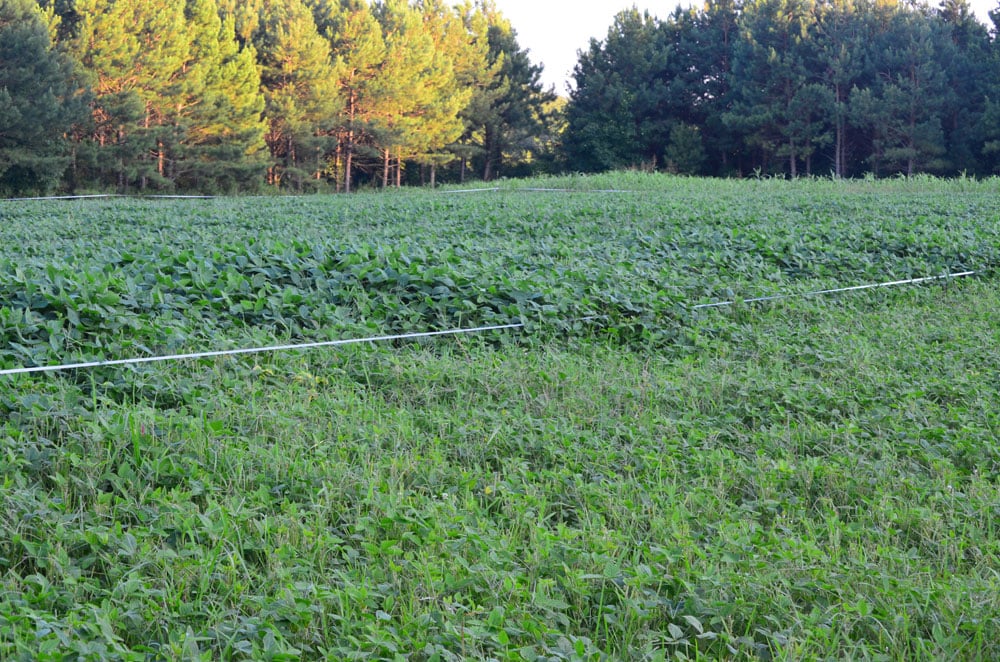
The poly fencing is flexible and can be lifted up and folded from the bottom to allow your deer herd into the plot. The other option is to fold from the top and allow the deer to jump over the now shortened fence. This latter method, however, may still keep some lazy deer or fawns out of the plot from their unwillingness to hop the unfamiliar fence. This fence typically comes in 330-foot sections, can be rolled up and stored, and is lightweight enough for one person to carry a roll. This system may be better suited for guys with heavy deer densities, but if you are planning to plant in high-density areas for several years, the tall poly fencing maybe your best option.
Some situations may require a more heavy-duty, or somewhat permanent fencing system. This can be especially true in areas with feral hogs. Gamekeepers trying to grow food plots on properties with high deer densities and feral hogs are in a constant battle. The combination of the constant rooting from the hogs and over browsing of immature plants by large numbers of deer, make growing successful plots seem impossible.
Some farms have faced this problem by using a seven to ten-foot tall tensile game fence. Although deer are physically capable of jumping these tall enclosures, the majority will not try. A four-foot section of hog paneling is then attached to the bottom of the fence on the outside. This section of heavy galvanized paneling on top of the ground prevents hogs from rooting and digging their way under the fence.
Another very effective and fairly permanent method of fencing food plots or young tree orchards is called a jackleg fence. This A-frame design uses metal T-posts and high tensile electric wire to keep animals out. Six-foot T-posts are driven into the ground, one foot deep, around the perimeter of the plot, then ten-foot T-posts are welded on, or wired to the six-foot post at an angle toward the interior of the plot.
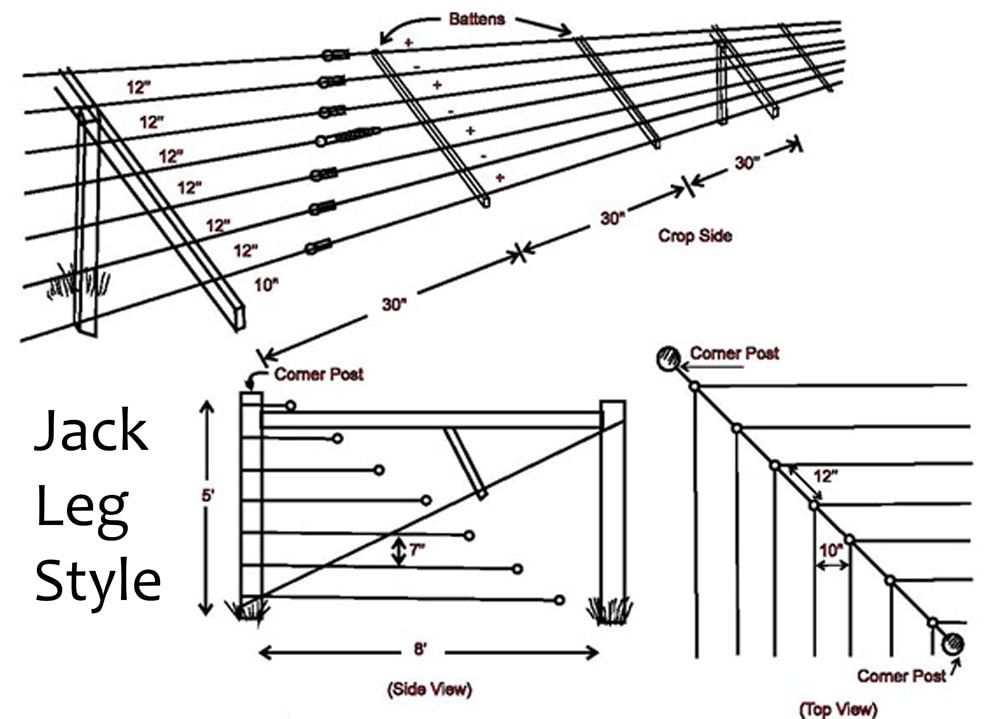
The bottom of the ten-foot post is then staked to the ground using rebar or other heavy-duty stakes. One common design uses seven high-tensile wires that are parallel to each other on a steep angle relative to the ground using support wires, boards, and battens that are positioned 12 inches apart, arranged with a slope toward the area confined by the fence. The bottom wire is positioned ten inches from the ground.
The top, third, fifth, and bottom wires are connected to the positive (+) post of a grounded, low-impedance fence charger. The second, fourth, and sixth wires are connected to the ground.
This slanted design creates multiple ways to discourage hogs and deer from crossing; one is by encouraging them to go under so they receive a jolt by the wires. The visual effect of the slanted wires is also a deterrent, preventing deer from jumping over. There are also splice kits and dead ends for corner posts and gates to make for smooth and tight wire junctions. Although this fence design is relatively short, selected test areas have shown 100-percent exclusion of deer and hogs. Obviously, with these almost total exclusion fencing designs, one or two gates would need to be installed to open when you felt the plot was mature enough to handle the browse pressure. This design of exclusion fencing is more suitable for areas that need to be protected long term such as new wildlife tree orchards.
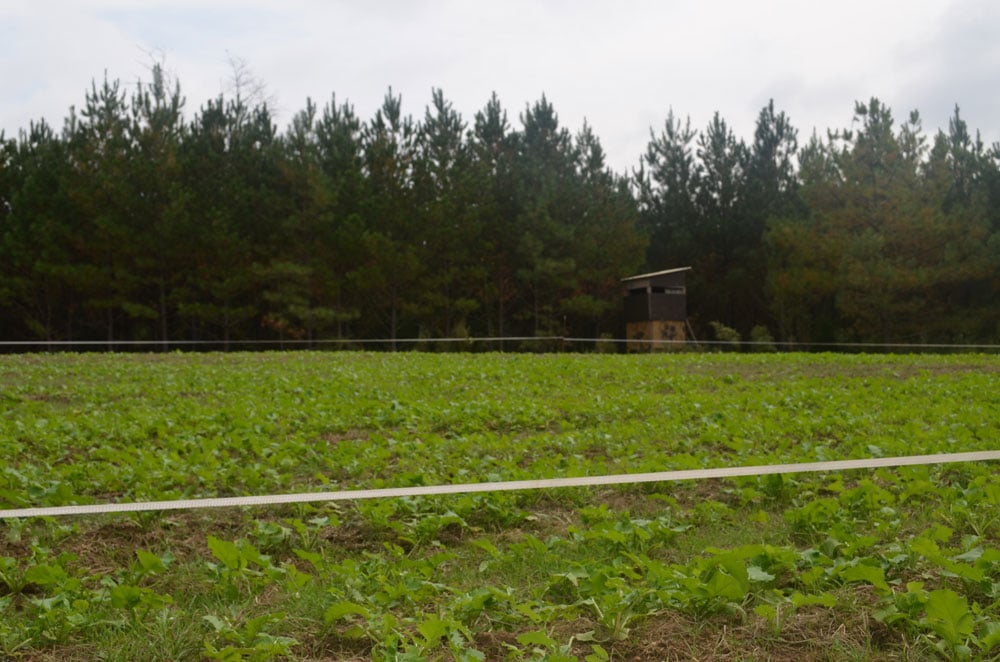
There are also several really good portable electric fence kits available on the market that do a great job of keeping deer out of a field until you are ready for them to have access. Often these kits come with a fence charger, solar panel, wire, and all the posts needed to get started. A big upside to these is that they can be put up and taken down without major labor and can be used in different plots from year to year.
Remember that these fencing options can also be used to protect a late summer planting of something like winter peas or a brassica blend from over browsing. Protecting these cool-season plantings can give you the ability to grow a lot of fall/winter groceries and not let the deer get to them until you are ready and the plants have a lot of growth. Several years ago we used the P2 Plot Protector to keep a Winter Bulb & Sugar Beet plot protected until mid-November. Once we took the fence down, there were dozens of deer using the plot all the way into late January because of the amount of food the plot was able to produce without the constant browse pressure when it was young.

